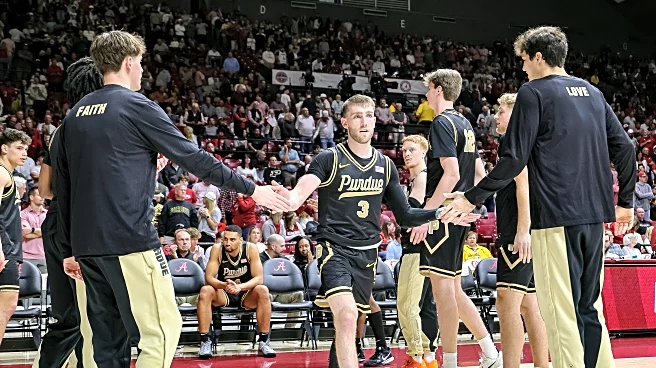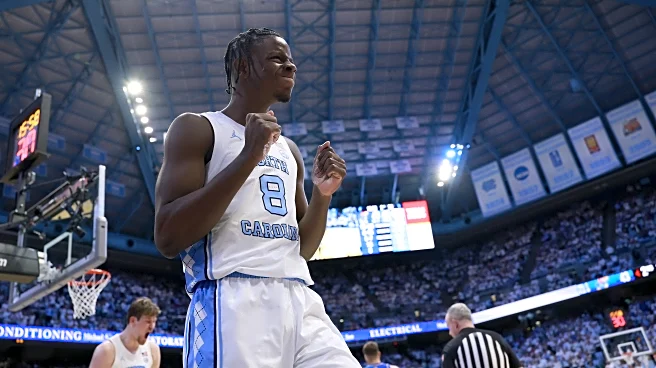What's Happening?
In a thrilling encounter, Purdue Boilermakers defeated Alabama Crimson Tide 87-80 in the first top-10 matchup of the basketball season. Braden Smith led Purdue with 29 points, including a dominant second-half
performance. Trey Kaufman-Renn contributed significantly with 19 points and 15 rebounds, marking his return from injury. Purdue's victory was bolstered by their dominance in rebounds, outmatching Alabama 52-28. Despite Alabama's strong 3-point shooting, hitting 16 of 44 attempts, Purdue managed to secure the win. The game was marked by 21 lead changes, showcasing the competitive nature of both teams.
Why It's Important?
This victory is significant for Purdue as it marks their first road win against a top-10, non-conference opponent since 1982. The win solidifies Purdue's position as a formidable contender in the season, boosting team morale and confidence. Alabama's performance, despite the loss, highlights their potential in 3-point shooting, which could be a key strategy in future games. The matchup serves as an early indicator of the competitive landscape in college basketball, setting the tone for upcoming games and rivalries.
What's Next?
Purdue is set to host Akron on Sunday, providing an opportunity to build on their momentum and further establish their dominance. Alabama will face No. 14 Illinois on Wednesday, a crucial game that could test their resilience and ability to bounce back from the recent loss. Both teams will likely focus on refining their strategies, with Purdue aiming to maintain their rebounding advantage and Alabama potentially leveraging their 3-point shooting prowess.
Beyond the Headlines
The matchup between Purdue and Alabama underscores the importance of strategic depth and adaptability in college basketball. Purdue's ability to dominate rebounds despite Alabama's strong shooting highlights the multifaceted nature of the game. The return of key players like Trey Kaufman-Renn adds a layer of complexity to team dynamics, influencing future performances. This game also reflects broader trends in college basketball, where teams must balance offensive and defensive strategies to succeed.












